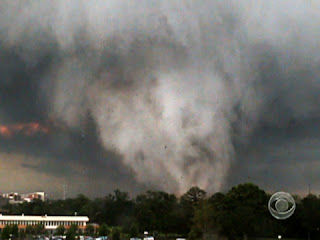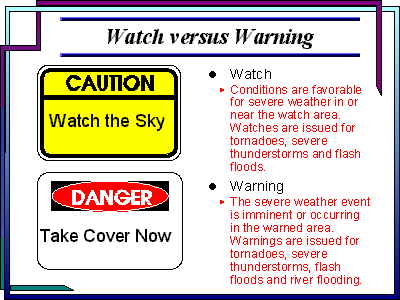The
2011 Tornado Season
A devastating lesson
By
Mr Twister (Zach Roberts)
2011 was a tornado season for the
record book. Monster storms plagued much of the Midwest and South Eastern United
States with severe weather and killer tornadoes. An astounding number of lives
changed forever as a result of this unprecedented past severe weather season.
In the coming years, there will be a number of articles, books and
documentaries released that will revisit different aspects of the 2011 tornado
season. I would like to submit my
contribution.
As a storm chaser, I wait with
unbridled anticipation for the spring severe weather season. My passion for
understanding the power of nature in its purest form has always come with an understanding
that with this power also brings death and destruction. I, along with all other
storm chasers, watched in horror as these tornadoes claimed the lives of men,
women and children in the spring of 2011. Unfortunately, this was the tornado
season I feared was inevitable. The number of stories relating to the 2011
tornado season could fill multiple books, and each is unique. I will cover the tornado
outbreak occurring the week of April 27th, and the Joplin tornado as
these were the most devastating storms from the most devastating tornado season
in at least 30 years. I will then review
some basic tornado information.
Throughout the week of April 25th-28th,
2011, an unparalleled tornado outbreak swept throughout the South Eastern
United States, causing cataclysmic destruction. An unfortunate series of meteorological
ingredients blended to create an explosive tornado environment. Instability
resulting from a cold front plowing into warm humid air lingering over the
South Eastern US aided by a powerful jet stream providing spin resulted in a
super tornado outbreak not seen since 1974. This event would produce some 353
tornadoes that caused 346 deaths and left an immeasurable amount of damage to
affected regions. Perhaps the most notable tornado from this outbreak occurred in
Alabama on April 27th. This monster tornado was caught on film by multiple
television stations as it marched across the city of Tuscaloosa, and later
Birmingham. Many watched in awe as secondary or multiple vortices snaked from the
ominous black core as it churned across the city. This giant EF4 wedge tornado left a path of
damage more than 80 miles long, and was measured to reach widths of more than
one and a half miles wide. Film evidence
shows the monstrous storm tearing through factories and metropolitan areas
alike, leaving 43 people dead and more than 1,000 injured. Although the Tuscaloosa tornado was not the
strongest tornado to strike that day, it has become the visual stamp of this
fateful week. The 24-hour-period from 8:00 a.m. April 27 to 8:00 a.m. April 28 would be the fifth deadliest tornado day in United States history. States of
Emergency were declared in Alabama, Arkansas, Kentucky, Mississippi, Missouri,
Tennessee and Oklahoma. The destructive
weather and subsequent flooding forced President Obama to declare a federal
state of emergency in Alabama. The
series of storms would leave entire cities and regions without power. Largely affected were the customers of the
Tennessee Valley Authority, which lost most of the power on their grid as
destructive weather and winds left transmission towers damaged.
Less than a month after the super outbreak in the South Eastern United States, the epic tornado season would produce yet another tragedy that left many in shock. The city of Joplin, a small town in Missouri near the border of Oklahoma and Kansas would be struck by a EF 5 tornado on May 22nd 2011. Although severe weather events are a common occurrence in Joplin, the residents were not prepared for the destructive EF5 wedge tornado that ravaged the city from 5:34pm to 6:12pm on that fateful day. The tornado had a base estimated at one mile wide, blasting winds estimated at 200 to 250 miles per hour, and left a path of destruction that would total some $3 billion. Sadly, an estimated 161 lives were lost in the Joplin tornado alone. The St. John’s Regional Medical Center in Joplin endured a direct hit from the tornado, and Dr Kevin Kikta was on duty that day. Below is an excerpt from Dr Kevin Kikta's personal blog recalling that day. A link to the full blog is listed below.
"At 5:42 pm a security guard yelled to everyone, “Take
cover! We are about to get hit by a tornado!”
I ran with a pregnant RN, Shilo Cook, while others scattered to various
places, to the only place that I was familiar with in the hospital without
windows, a small doctor’s office in the ED. Together, Shilo and I tremored and
huddled under a desk. We heard a loud
horrifying sound like a large locomotive ripping through the hospital. The whole hospital shook and vibrated as we
heard glass shattering, light bulbs popping, walls collapsing, people
screaming, the ceiling caving in above
us, and water pipes breaking, showering water down on everything. We suffered this in complete darkness,
unaware of anyone else’s status, worried, scared. We could feel a tight
pressure in our heads as the tornado annihilated the hospital and the
surrounding area. The whole process took
about 45 seconds, but seemed like eternity. The hospital had just taken a
direct hit from a category EF5 tornado".
The 2011
tornado season could be a once in a lifetime event. We may or may never see (in
our lifetime) such a destructive set of circumstance come together as was
witnessed in the spring of 2011. We do however know that each spring tornadoes
will strike. Some will be weak only affecting rural areas of the Great Plains,
but some will be strong, deadly and affect urban areas. Much of the public is fascinated
by tornadoes, but the many do not understand these killer storms. What is a
tornado? Where does a tornado form? What
can I do to protect myself?
A tornado is a violent, dangerous, rotating column of air that is in contact with both the surface of the earth and a cumulonimbus cloud or, in rare cases, the base of a cumulus cloud.
Tornadoes have appeared everywhere on earth save Antarctica, are most common in North America and are especially common in the United States. Tornadoes in the U.S. are most likely to occur in a block of land in the middle of the country, from about North Dakota to mid-Texas. This area of land is often referred to as Tornado Alley. Texas gets the most tornadoes per year, followed by Kansas and Oklahoma. On average 1300 tornadoes are recorded in the U.S. every year and kill about 60 people.
Tornadoes can’t really be predicted and can only be minimally prepared for. Powerful ones routinely uproot even large trees, toss cars around, destroy buildings and leave behind so much debris that roads and railroads are impassable. Some tornadoes are weak and may be only a few feet across, while large tornadoes can span a mile or more in width and travel hundreds of miles on the ground. However, most tornadoes are about 500 feet wide, are in contact with the ground for about five miles and only last about ten minutes or less, though if a person’s in the path of one, that’s a very long time! Most tornadoes arrive late in the afternoon or the early evening. Generally, they move from west to east, but some have been known to switch direction, or even double back on themselves. Peak season in the U.S. is from April to July, but tornadoes have been recorded at all times of the year.
There are a few species of tornadoes. Multi-vortex tornadoes have more than one funnel that swirl around a common center. Waterspouts occur over water, and land spouts are associated with storms that aren't as strong and land spouts don’t last as long as classic tornadoes. For all its weakness, a land spout can still do considerable damage.
In hindsight, the tornado events of 2011 have brought tornado safety to a new light, but the average lead time on a tornado warning is a paltry 13 minutes. As technology and awareness grows it is believed that this warning lead time can be increased. We still do not fully understand tornadoes, and storm chasers, meteorologists and scientists are working feverishly to get a better idea of why these monsters can be weak or strong and leave one block unscathed while destroying the next. As fascinated as I am with tornadoes and weather, I do not enjoy the death and destruction that they bring. So please, stay up to date on severe weather by staying tuned to the National Weather Service, our website www.chasingthetornado.com , our Facebook page http://www.facebook.com/FollowMrTwister?
ref=ts, our Twitter feed @mrtwisterchaser and this blog.
Photos and graphics not taken or created by Mr Twister.
Sources: NOAA, TWC, NWS, Alabama NWS,Tuscaloosa News, FOX Channel 6, NCAR, Dr Kevin Kikta, CNN
Link to Dr Kevin Kikta's blog- http://www.mercy.net/joplin/stories-of-mercy/45-seconds
























